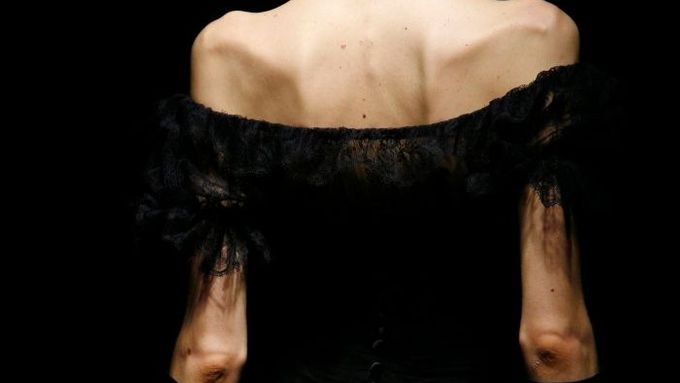What is BMI?
- The body mass index (BMI), or Quetelet index, is a statistical measurement which compares a person's weight and height based on age, sex and body constitution.
- BMI is used differently for children. It is calculated the same way as for adults, but then compared to typical values for other children of the same age.
- It was invented between 1830 and 1850 by the Belgian polymath Adolphe Quetelet during the course of developing "social physics".
- BMI became popular during the early 1950s and 60s as obesity started to become a discernible issue in prosperous Western societies.
Prague - It has been proven many times before: thinness made fashionable by fashion and advertisement industry produces anorexia, bulimia and other eating disorders.
Czech experts drafted a list of measures to be taken to prevent more deaths caused by the long-term loss of appetite or by any other form of eating disorders among fashion models.
"They (the measures) can save lives," the doctors say who have recently met up in Prague.
In the preventive action list the Academy for Eating Disorders (AED) is asking the fashion industry workers not to hire girls under 16. Their underdeveloped adolescent bodies have been setting ill trends for "ultra-thinness" in the past decades.
According to the experts, it is highly desirable to promote fashion models that have "normal" weight in line with the body mass index (BMI), which is a statistical measurement that compares a person's weight and height. An adult fashion model being 175 cm tall should not weigh below 57.5 kg.
Obligatory certificate
Among the preventive steps recommended by the AED experts is also an obligatory doctor's certificate certifying a person is not underweight.
Further, fashion magazines should stop altering photographs and making fashion models look "thinner than they are."
Czech women are not spared in this and are exposed to anorexia and bulimia too. With more fashion magazines and advertisements flooding the local market after the Velvet Revolution, the figures of women suffering from eating disorders have risen drastically.
"In 35 countries the Czech Republic had one of the highest numbers of 15-year old girls who said they were on a diet," a recent study conducted by HBSC shows.
Another survey suggested that one third of Czech women would like to be thinner than they are, without reflecting the BMI.







